I. Project Origin and Purpose
Considering that the development of traditional water resources is becoming more and more difficult, and the probability of extreme weather is increasing under the growth of water demand and climate change, the existing water resources facilities cannot supply sufficient water stably in Hsinchu.
In response to the potential increase in water demand and avoiding the stability of water supply to hinder the development of high-tech industries, the development of multiple water sources is imperative. Among all emerging water sources, seawater desalination has the characteristics of being immune to climate influence, stable water supply, and shorter construction period than traditional water resources facilities. Seawater Desalination is now recognized as one of the essential options for the development of emerging water sources in Hsinchu.
II. Major Development Summaries of the Project
Table 1 The Calendar of Major Events
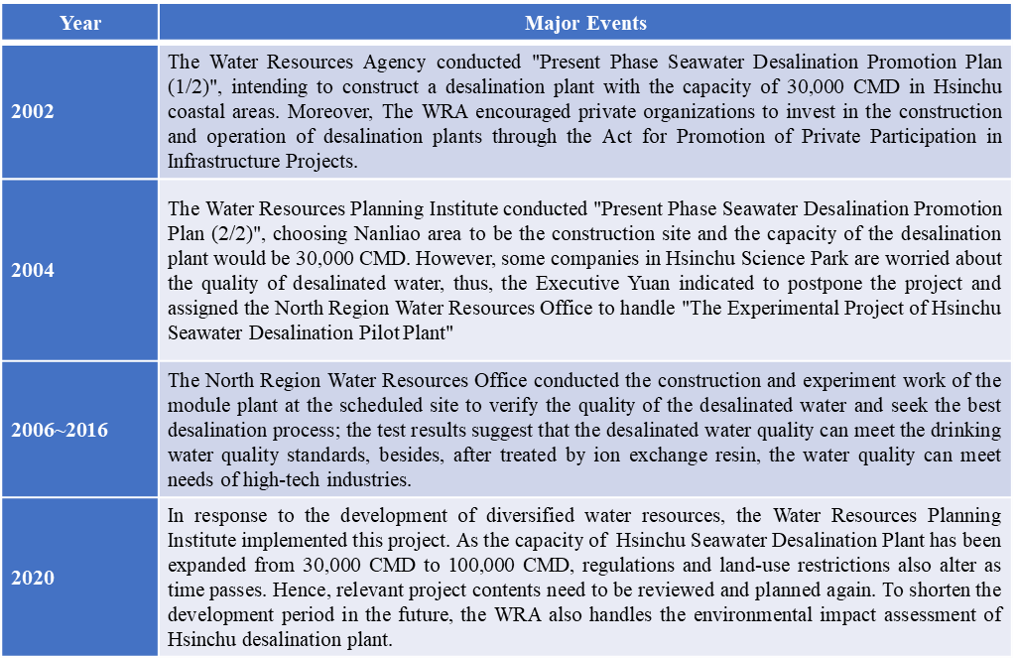
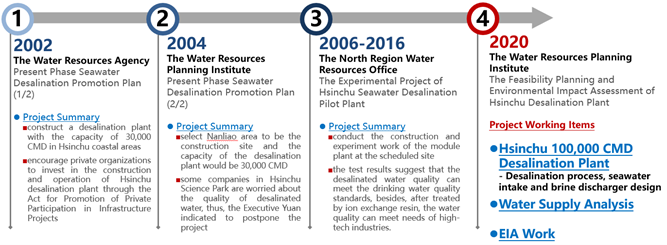
Figure 1 The Flow Chart of Major Events
III. Planning Results
1. Desalination Process
The desalination process (Fig. 2) of Hsinchu Desalination Plant involves seawater intake system, pretreatment process (coagulation and flocculation), ultrafiltration, RO and post treatment process (disinfection and mineralization). The desalinated water quality can perfectly fit the drinking water quality standard.
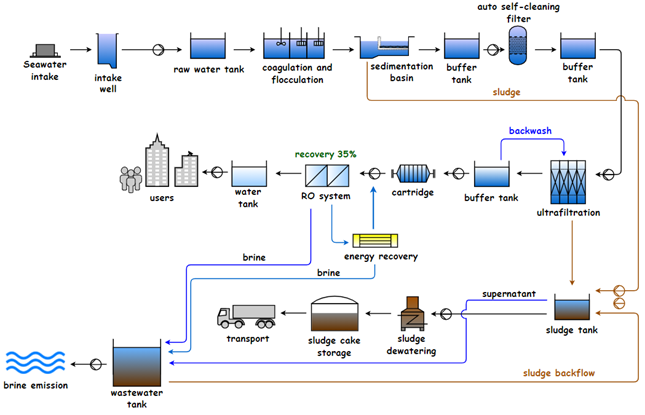
Figure 2 Desalination Process of Hsinchu Desalination Plant
2. Configuration of the Plant
The Capacity of Hsinchu Desalination Plant of 100,000 CMD and the total area (as shown in Fig. 3) is approximately 10.1 hectares. 2 hectares of land is reserved for Water Innovation Technology Hub and Displaying Base in the future. The freshwater will be transported to the Nanya Water Treatment Plant and the Second Water Treatment Plant to supply.
3. Seawater Intake and Brine Discharger
The seawater intake system is planned to set at a depth of at least 10 meters, and the length of the intake pipe is about 1,350 meters (Fig. 4), which will not only ensure that the intake system could gain sufficient seawater but also avoid the drifting sand burying the intake facilities.
The discharger system is also set up at a water depth of about 10 meters, the pipe is about 1,500 meters long (Fig. 4), and the distance between the intake and discharger is approximately 700 meters to avoid re-drawing the brine from the intake.
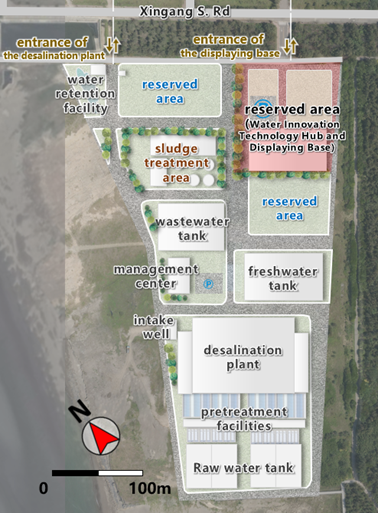
Figure 3 The Configuration of Hsinchu Desalination Plant
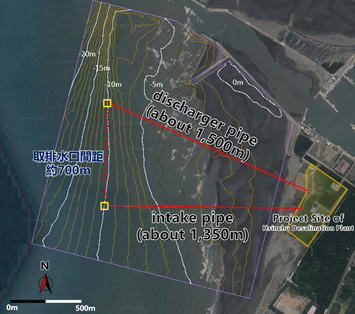
Figure 4 Seawater Intake and Brine Discharger